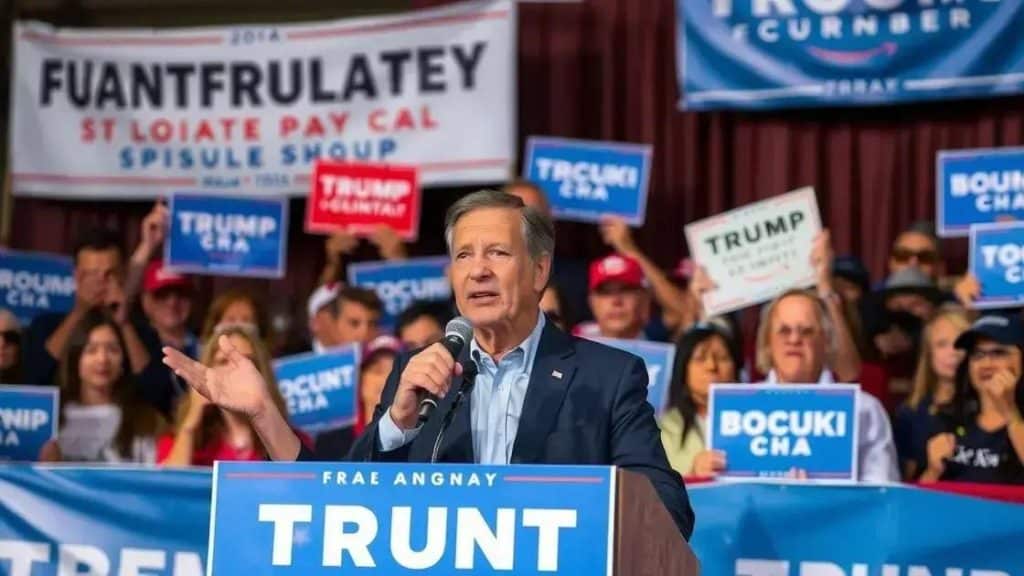His political campaign focus: understanding the strategy

Analyzing campaign finance reveals how funding sources influence political campaigns, affecting candidates’ visibility, strategic spending, and ultimately, voter engagement and election outcomes.
His political campaign focus can shape the direction of an entire election. Ever wondered how candidates craft their strategies? This article dives into the essential components of effective political campaigns and their significance.
Key components of a successful political campaign
Understanding the key components of a successful political campaign is essential for any candidate aiming to connect with voters. Campaigns are built on various strategies and tactics that resonate with the public and enhance a candidate’s visibility.
Strategic Planning
Every effective campaign starts with a solid plan. This involves setting clear objectives and knowing which issues matter to the electorate. Strong campaign planning helps navigate challenges and seize opportunities during the election cycle.
Voter Engagement
Engaging with voters is crucial. Campaigns often utilize town hall meetings, debates, and door-to-door canvassing to connect with the public. Building personal relationships can greatly enhance a candidate’s appeal.
- Create opportunities for face-to-face interaction.
- Utilize surveys to understand voter priorities.
- Be present at community events to foster connections.
Another important aspect is the message. A clear and compelling message resonates with voters’ emotions and perspectives. This message should align with the candidate’s values and the community’s needs, effectively communicating their vision for the future.
Digital Presence
In today’s digital age, a robust online presence is a game-changer. Candidates should leverage social media platforms to reach a wider audience. Engaging content, such as videos and infographics, can enhance visibility and humanize the candidate.
Increasing awareness about campaign issues can also be achieved through targeted online ads. Keeping the public informed and engaged is key to a successful campaign.
Understanding voter demographics and their impact
Understanding voter demographics and their impact is critical for crafting effective political campaigns. Knowing who votes and why can shape how candidates connect with their audience.
Importance of Voter Demographics
Voter demographics include factors such as age, gender, income, and education level. These factors can influence voting behavior and preferences. For instance, younger voters may prioritize issues like climate change, while older voters might focus on retirement and healthcare.
- Age groups often have distinct political preferences.
- Income can determine priorities, such as taxation or social services.
- Education influences views on issues like education policy and economic development.
To effectively engage various demographics, campaigns must customize their messages accordingly. Candidates should tailor their rhetoric to resonate with different groups. For example, focusing on local community issues can appeal to specific neighborhoods.
Analyzing Data for Strategy
Data analysis plays a key role in understanding demographics. Campaigns can use survey data, polling results, and social media analytics to gather insights on voter preferences. This information helps in honing campaign messages to address the concerns that matter most to different demographic groups.
Such insights allow campaigns to allocate resources efficiently, targeting areas with potential supporters. Additionally, understanding the needs of the community can create a sense of trust, leading to increased voter turnout.
Effective messaging strategies for campaigns

Effective messaging strategies for campaigns are vital for connecting with voters. A strong message can increase support, highlight key issues, and differentiate candidates from their opponents.
Crafting a Clear Message
A successful campaign relies on clarity. Candidates should focus on a few key points that resonate with their audience. This helps voters easily remember the candidate’s stance and vision. A clear message reduces confusion and builds trust.
- Identify core values that reflect the candidate’s beliefs.
- Use simple language that everyone can understand.
- Incorporate stories that relate to the audience’s experiences.
Visual storytelling can enhance the message. Using images, videos, and infographics makes the message more engaging. Visual elements allow campaigns to convey complex ideas quickly and effectively.
Targeting and Personalization
Another important aspect is targeting demographics. By tailoring messages to specific groups, campaigns can address unique concerns that might influence their vote. This approach fosters connection and makes voters feel valued.
Campaigns can utilize data analytics to segment audiences based on age, location, and interests. Personalizing communication increases relevance and impact, leading to higher engagement.
Utilizing social media in political outreach
Utilizing social media in political outreach has become essential for modern campaigns. Platforms like Facebook, Twitter, and Instagram allow candidates to reach a larger audience quickly and effectively.
Building a Strong Online Presence
An effective social media strategy begins with creating a strong online presence. Candidates need to establish official accounts on various platforms to communicate directly with voters. Consistent posting of relevant content helps build trust and engagement.
- Share updates about campaign events and news.
- Post behind-the-scenes content to humanize the candidate.
- Engage with followers through comments and messages.
Maintaining a conversational tone is key. Responding to voter questions and comments can foster a sense of community. This interaction makes voters feel valued and heard, which can lead to increased support.
Targeted Advertising
Social media also offers targeted advertising options. Campaigns can reach specific demographics based on interests, location, and behavior. These ads can be used to promote events, fundraising efforts, or key messages.
Visual content, such as videos and images, tends to capture more attention than text alone. Creating eye-catching visuals can increase the likelihood of shares and likes, amplifying the campaign’s reach. Additionally, using hashtags can help organize conversations around the campaign, making it easier for supporters to find and share content.
Analyzing campaign finance and its influence
Analyzing campaign finance and its influence is crucial for understanding the dynamics of political campaigns. Funding can determine the resources available for outreach and advertising, directly impacting a candidate’s success.
Sources of Campaign Funding
Political campaigns receive money from various sources, including individual donors, political action committees (PACs), and party contributions. Each of these plays a unique role in shaping a candidate’s financial landscape. Some sources may come with expectations for certain policy positions, influencing candidates as they craft their messages.
- Individual contributions help build grassroots support.
- PACs often represent specific interests and industries.
- Party contributions can provide critical support during key campaign phases.
Understanding the source of funds can help voters gauge the priorities of their candidates. Transparency in campaign finance allows the public to see who is backing a candidate and why.
The Impact of Money on Elections
The amount of money spent on a campaign often correlates with visibility and voter engagement. Campaigns that can afford extensive advertising are more likely to capture public attention, leading to better performance at the polls. Research shows that candidates with higher funding often have increased name recognition.
However, it’s not just about how much money is raised but also how effectively it is spent. Knowing how to allocate resources wisely, such as investing in targeted ads or strategic outreach efforts, can make a significant difference in campaign outcomes.
FAQ – Questions about Campaign Finance and Its Influence
What are the main sources of campaign funding?
The main sources of campaign funding include individual donors, political action committees (PACs), and party contributions.
How does campaign finance impact election outcomes?
Campaign finance impacts election outcomes as candidates with more funding can afford better visibility and outreach, leading to increased voter recognition and support.
What role does transparency play in campaign finance?
Transparency in campaign finance allows voters to understand who funds candidates and helps them make informed decisions based on potential influences on policy.
How can campaigns ensure effective use of their funds?
Campaigns can ensure effective use of funds by strategically allocating resources to high-impact areas, such as targeted advertising and community engagement efforts.





